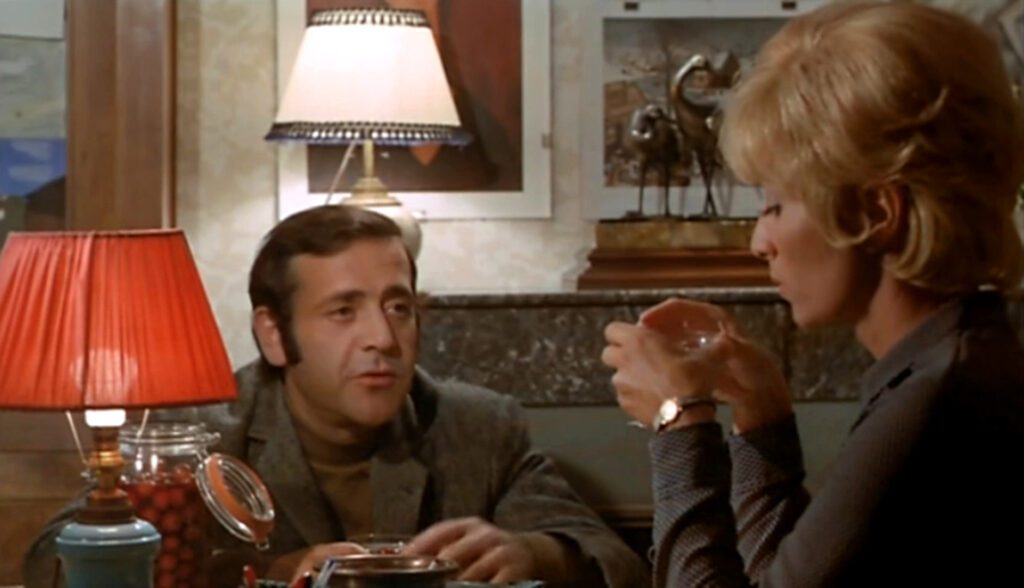
Le boucher
1970, directed by Claude Chabrol
Both the midpoint and the opening titles of Le boucher were filmed inside the Grottes de Cougnac in southwestern France. When Hélène guides her pupils through the cave, she uses the occasion to discuss the prehistoric humans who lived there. One of the children asks, “What if Cro-Magnon man came back?” Hélène answers, “I don’t know. He might adapt himself to our conditions. He might die.” A student follows up, “I don’t want him to die. I’m sure he was very nice.”
Any alert viewer will probably connect this hypothetical returning caveman to Popaul, whose relationship with Hélène is characterized in so many ways as an encounter between the primitive and the civilized. Popaul is a butcher, a recent veteran of two brutal wars, and a murderer preying on a series of local women. Hélène is a teacher and the school’s headmistress. She lives above the schoolrooms, and the “ville” in her surname Daville alludes to human settlements, i.e. civilization. For his birthday she gives him a lighter, a civilized way to make fire, an improvement over the matches he’s been using. At her school’s fête he dresses up in 18th century costume, simultaneously a sign of high civilization and a reminder of the savagery of that time. In contrast to the primitive animal drawings on the cave walls, Hélène’s rooms are lined with reproductions of fine art.
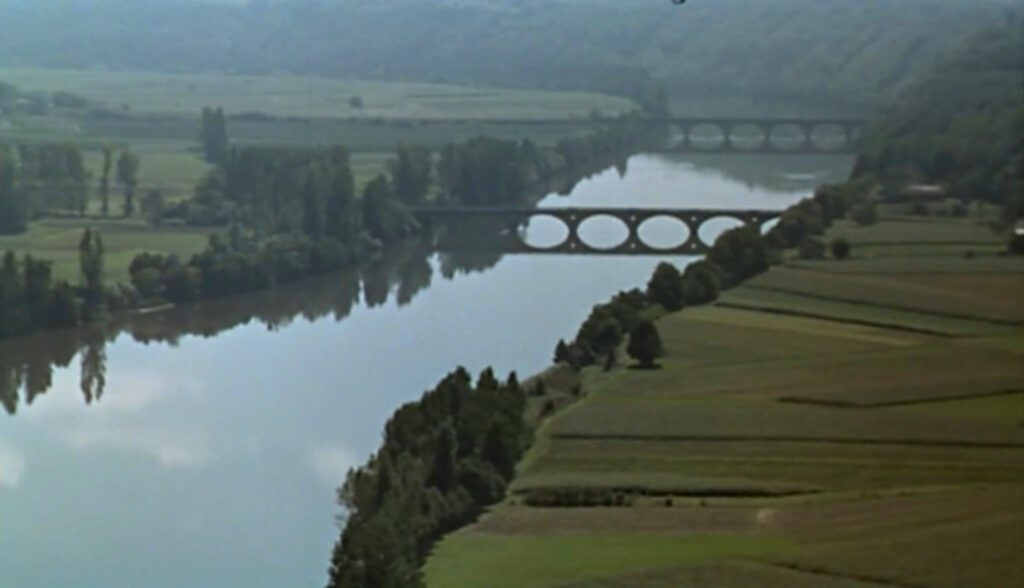
There’s more to the encounter however than a simple meeting across the ages. The opening shots emphasize the cavern’s stalactites and stalagmites pointing at each other across the void, and Popaul looks up to Hélène like a stalagmite regarding the unreachable stalactites above. The gulf is physical as well as social. When he sits at her table he takes a seat lower than hers, comically forcing him to look up at her. When he appears at the classroom window his face is framed in the lower corner while she stands over him. On other occasions he calls to her apartment from the plaza below. On the way to the hospital he’s cradled in her arms or slumped in the car seat, and when they finally kiss she leans over his gurney.
What’s striking about all this is the absence of any moralistic perspective. Most serious films about murder adopt an obligatory posture of shock, outrage, or at least sociological or psychological inquiry toward the crimes. Le boucher acknowledges the horror of the killings, but the film’s emphasis is elsewhere. In the butcher’s final moments he’s granted a kiss, and for once he switches places with Hélène, rising above her on the hospital elevator as if his soul were ascending to heaven. The red elevator light blinks on and off, holds one last time, and goes out at the moment he dies, implying the existence of a beating heart inside him. For all his savagery the movie leaves little room to doubt the sincerity of his feelings for Hélène. It’s all very well for a schoolchild to imagine that a brutal caveman from the Stone Age was “very nice”, but few people and few movies are prepared to face the kernel of innocence within someone as guilty as Popaul.
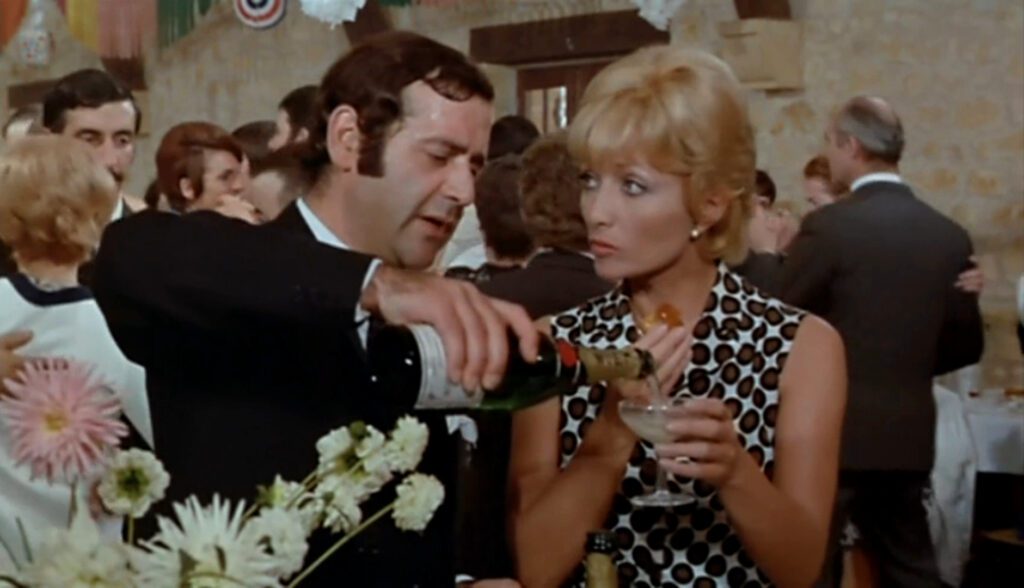
Claude Chabrol’s films are particularly interested in the paradoxes of humanity, and they point toward a vision of justice that depends on appreciating those paradoxes. Ironically Popaul’s zodiac sign is Libra, a symbol of justice, while Hélène is a Scorpio. It’s not that he’s morally superior; the irony is that she’ll be the one to hurt him (through no fault of her own) while justice subsists in seeing him for what he is. The greatness of Le boucher is that so much of its understanding is unspoken. We’re left to read Hélène’s mind, especially at the turning point when she finds the lighter missing, and again at the end when she reflects on her encounter with this human beast, this relic from the evolutionary past.
Befitting a film about paradox, Le boucher is filled with doublings. There are two scenes of discovery at Hélène’s drawer, each leading to a counterintuitive insight. Hélène had found the lighter she gave Popaul when she discovered Léon’s wife’s body outside the cave. She hid this detail from the police, unable to bring herself to incriminate someone so close to her, but the knowledge stands between her and Popaul until she sees, with great relief, the replacement lighter in his hand. When he discovers the original in her drawer, he must realize not only that she suspected him and didn’t turn him in, but also that he’s now exculpated in her eyes. The logical thing would be to leave it there, letting things stand, but he’s so embarrassed to think that Hélène, his idol of civilization, ever saw his weakness, that he impulsively removes the lighter. When she finds it missing, not only does she know (again) that he’s guilty, but she also recognizes that he reveres her so much that he couldn’t help taking the lighter and incriminating himself.
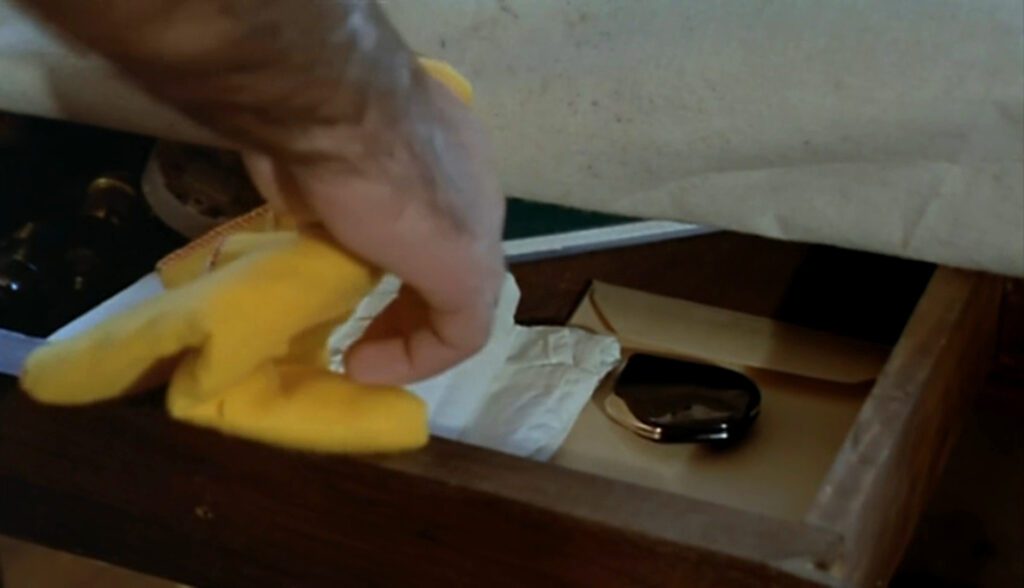
The film prepares for this climactic recognition, deepening Popaul’s character with yet more doublings. At the wedding party and on their walk home, he had twice praised her for her logic – first for pointing out that Parisians vacation in the provinces while provincials vacation in Paris (indicating why the two hadn’t met last time Popaul returned), and second for saying it’s more hygienic to smoke in the street than indoors. These two passages quietly establish that his attraction is not merely physical but the admiration of a simple soul toward an advanced intellect. Before they part she’ll reciprocate, saying it’s “logical” that soldiers have to eat.
Immediately after that last remark, although Popaul is gallantly walking Hélène home, he stops short of approaching the school, as if he’s intimidated or feels excluded. Only later when he brings a gift, a leg of lamb, will he feel emboldened to enter her zone. His second gift to her, also presented from below at the school, is a jar of brandied cherries, a sign that he’s growing more civilized.
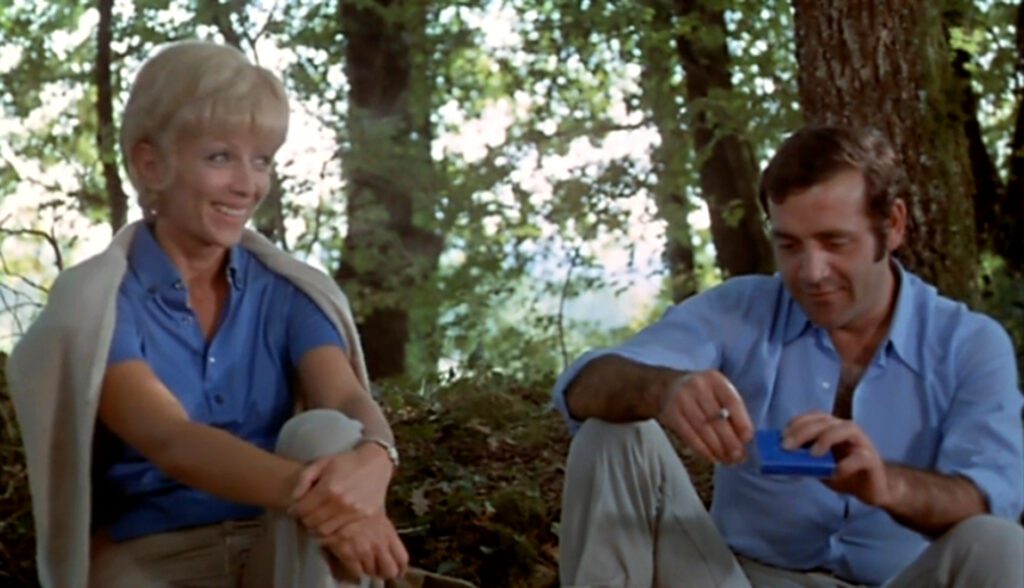
In the schoolroom, recalling his lessons with Mlle. Vachin (her name is close to the primitive “cow”), Popaul admits that he wasn’t good at arithmetical problems involving trains. Later, when Popaul finds the lighter in the drawer, Hélène’s star pupil will ask him for help with such a train problem, but he’ll be too distracted to think about it. A train of course stands for civilization, and there’s something both touching and true to life about his aversion to those word problems.
The drops of blood at the school picnic and the drops of paint on Hélène’s carpet are another doubling. Popaul is the cause of both – the red drops show him at his most savage, the white drops show him being helpful, painting Hélène’s ceiling as a gesture of love. All of these characterizations point to the humanity in the killer – a humanity that in real life can be hard to find, but which we will always miss if we demonize a criminal. The point is not to excuse Popaul’s crimes, but to look at him honestly in his full complexity. By framing its chief contrast not in moral terms but through the analogy of a caveman appearing in civilization, the film should help us to recognize the coexistence of savagery and goodness in a single person. Not only is the primitive beast Popaul capable of noble sentiments, but civilized man is likewise capable of horrifying savagery, as the allusions to Algeria, Indochina, and the butchery of animals remind us. Humans are unlikely to move beyond savagery until we learn to see the paradoxical intertwining of guilt and innocence in ourselves and others.
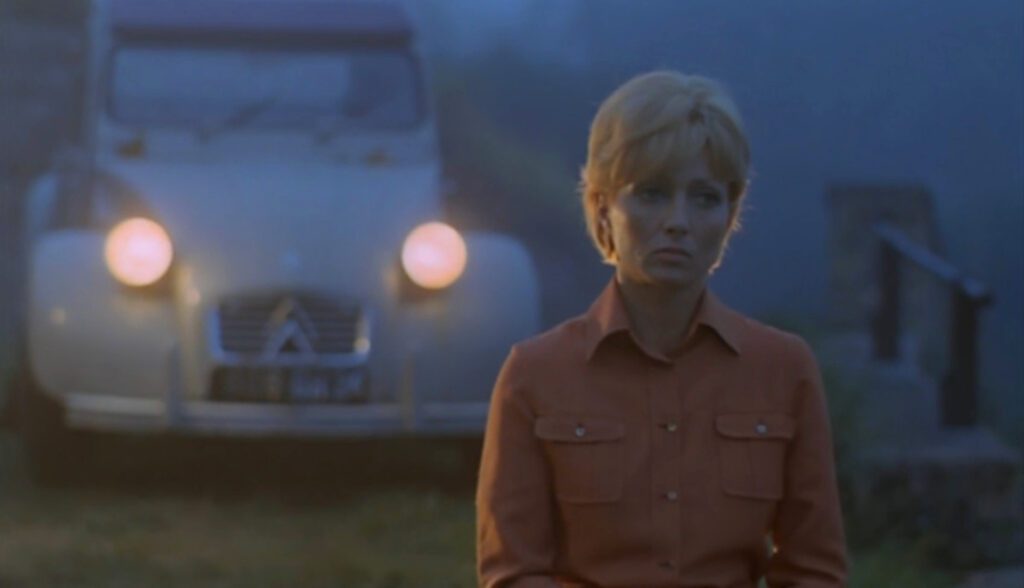
Le boucher opens (after the titles) with a panorama of Trémolat on the Dordogne River. The pair of bridges are a sign of civilization, their rows of arches evoking Roman architecture. Facing upriver, the vista calls attention to the two opposing sides that the bridges join, just as the stalactites and stalagmites had called attention to their own separation. At the very end, when Hélène looks across the river, the view has rotated ninety degrees. She sees buildings and nature in the misty morning twilight, the civilized and the primitive coexisting, but from her point of view there’s no longer any duality or opposition. It’s simply one side looking at the other, finally able to look with wonder. She and Popaul were different in obvious ways, but they’re also equivalent. As Popaul says on his way to the hospital, speaking on the topic he knows best – “All blood has the same smell, the blood of animals and the blood of men. Some blood is redder than others, but all blood smells the same.”
CONNECTIONS:
Monsieur Verdoux – Paradoxical portrait of goodness in a murderer
Strangers on a Train – Cigarette lighter as the clue to a murderer; killer prefers his mother to his father
Le beau Serge – Story about the paradoxes of human nature, with extensive doubling
Alphaville – Flickering indicator of occupied space; argument for embracing paradox
La rupture – Turning point when a character named Hélène understands a seemingly monstrous man in a flash